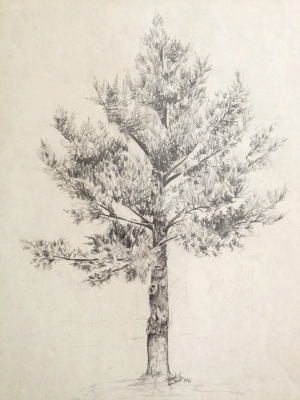Art tends to be a solitary activity, but it can also be a great way to have fun with your kids in a way that encourages their creativity and results in fantastic refrigerator decoration! Try this on the next rainy day when your kids are “bored” or when you want to pull them away from TV, video games, etc.
I call this project the “3 Rooms Creatures” as a reference to the Elton John tribute album “Two Rooms” (referring to how Elton’s songs were written by Bernie Taupin (lyrics) and Elton John (music) in 2 different rooms) – and because I have 2 kids (so there are 3 of us drawing). However, you can do easily do this project with 2, 3 or 4 people.
OK – here is how it works: Each person gets a piece of paper, a pencil, an eraser and an assignment for one section of your creature. Because there are 3 of us, one person gets the head & neck, one gets the torso/belly and arms and the third person gets the legs & feet. Here is the key – these are the ONLY instructions that get shared! The fun is in not collaborating on what kind of creature each person will be drawing. If you have 2 people, one can do the head and chest, while the other does the belly and legs. If you have 4 people, you can break it into head, chest & arms, belly and tail, and legs and feet.
Now, each person needs to go to a different room in the house where they can’t see what the others are drawing. No peeking! You will be amazed at what your kids come up with without any guidance or influence.
Finally, when everyone is done – bring the parts together and construct your complete creature. Because you didn’t talk about what you are doing, you will likely have totally different parts… maybe a bird-like head, dragon-like torso and human-like legs for example. You may need to do a little doctoring with scissors and a little eraser work to get the parts to fit, but surprisingly, it usually doesn’t take much!
The end result is fun, even outrageous. Kids love the process and are thrilled with the roll they played in creating this new crazy thing. We proudly display the end result on our refrigerator… The only challenge is what to do when you need a bigger fridge to display all of your creatures!
Happy Drawing,
Jason





